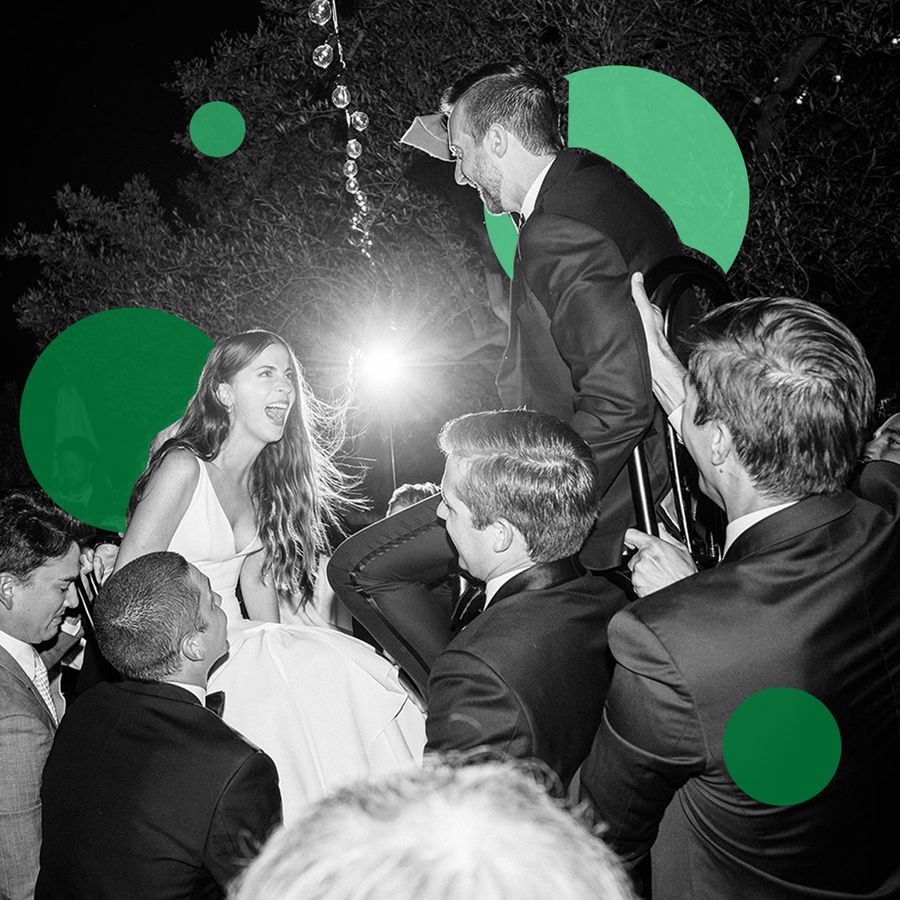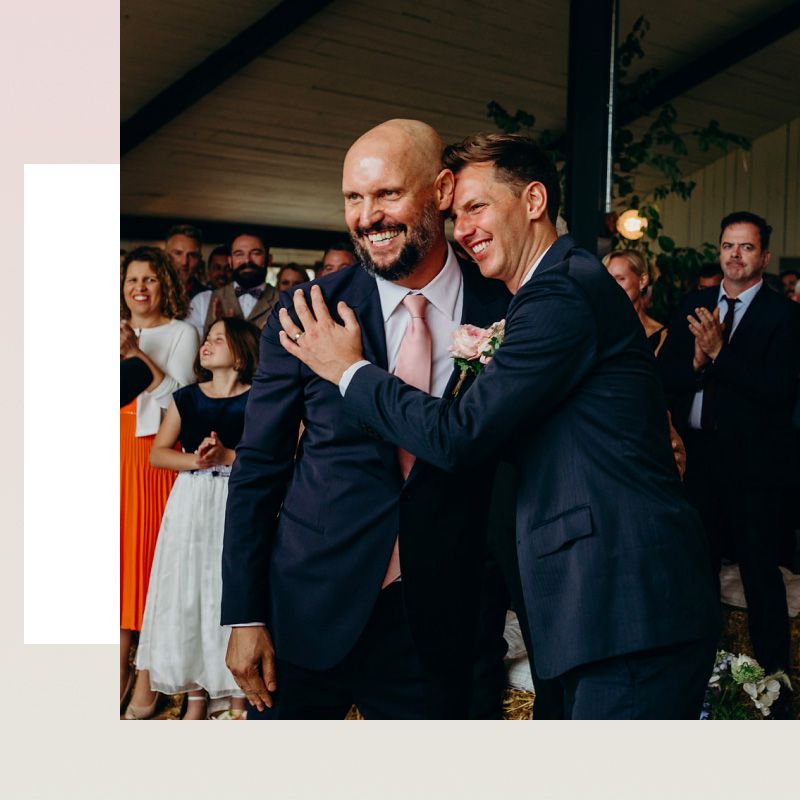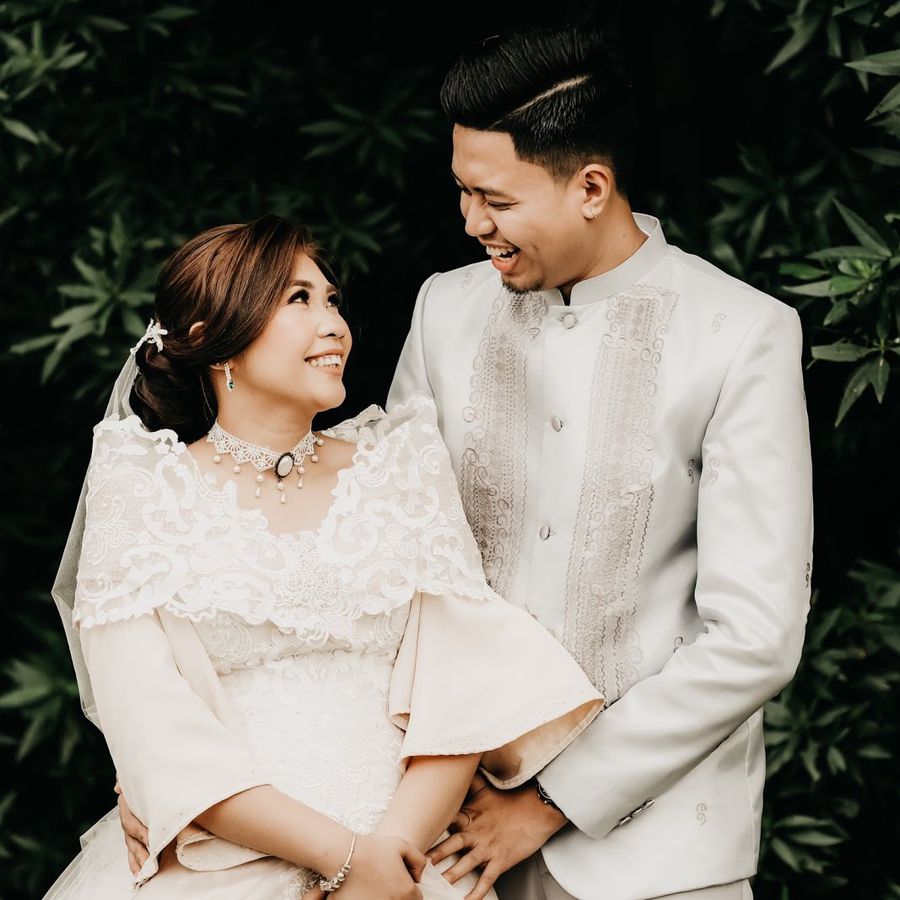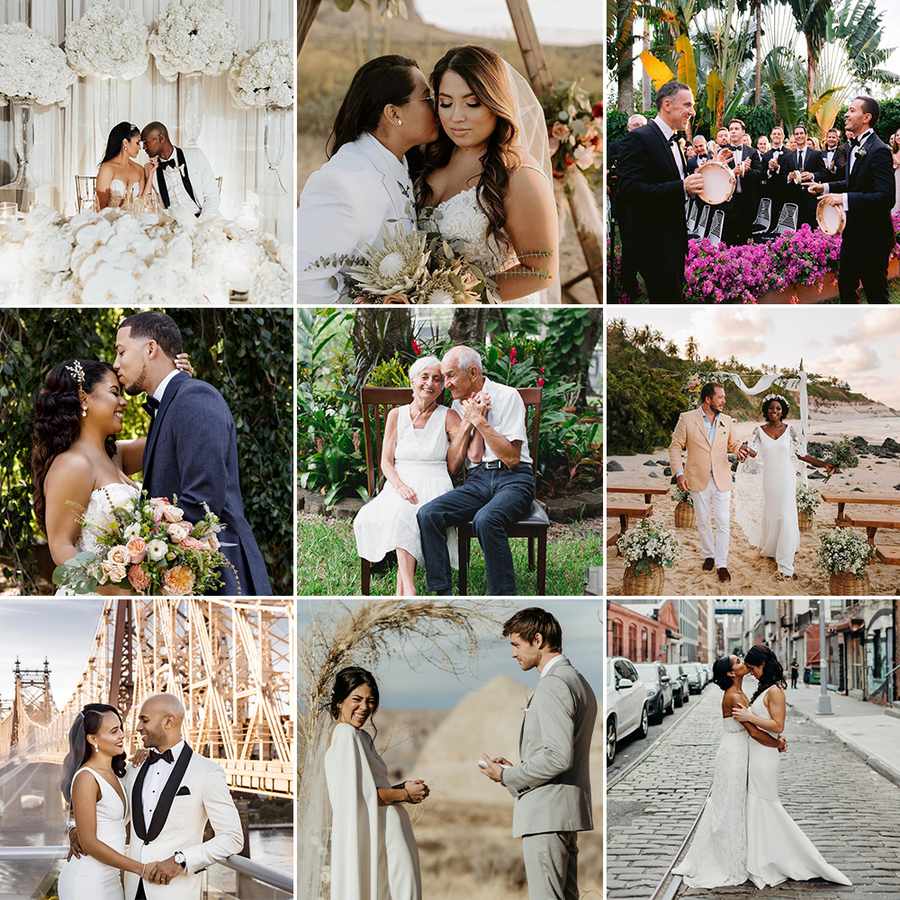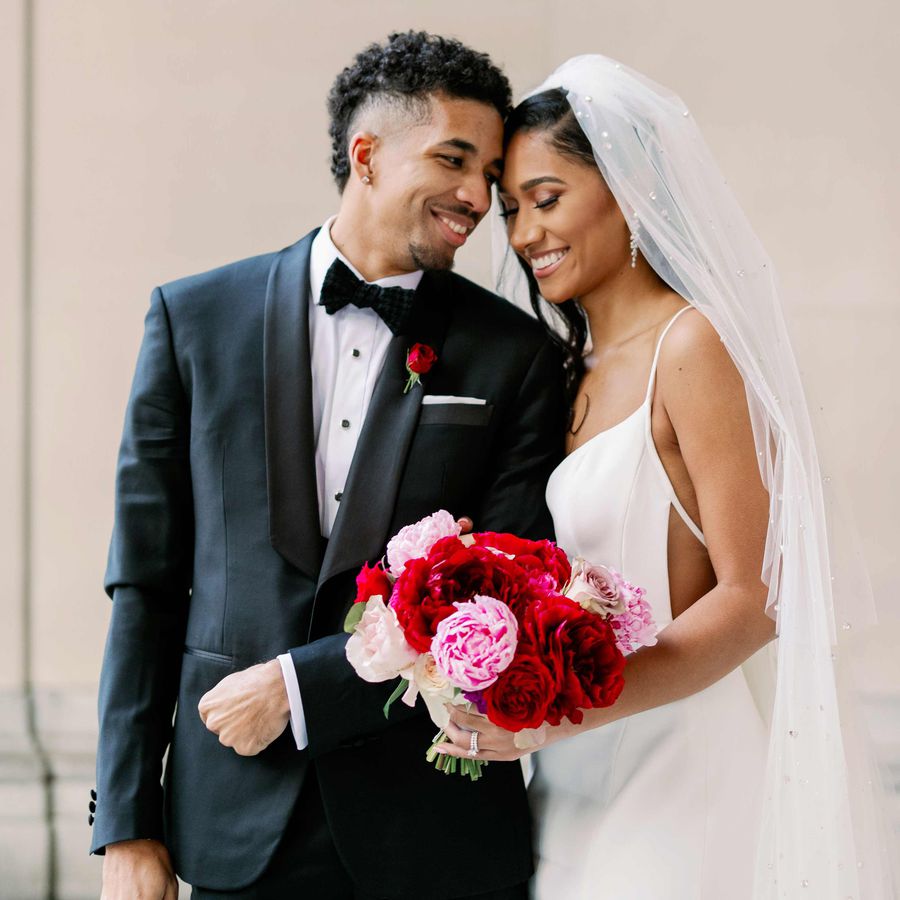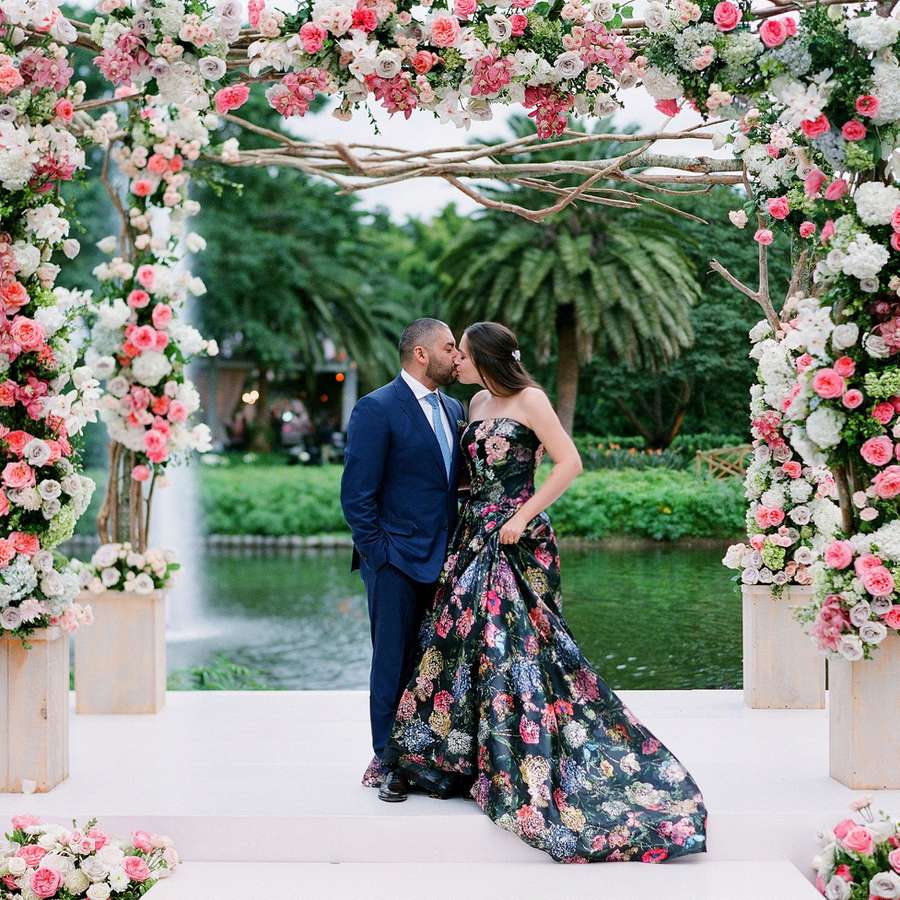:max_bytes(150000):strip_icc()/SidneySnoopWeddingSneakPeeks-135-fa9fa45e1d00447baa5daafabced3021.jpg)
Photo by Second Shots Photography
Most Black Americans, like myself, are unaware of our specific ethnic origins. While we know we are part of the African diaspora, we don’t know what tribe or region connects us to the continent. However, despite what we lost during our enslavement, we developed and have passed down new traditions that are relevant, beautiful, and worth celebrating, particularly at a wedding.
"There is a specialness about Black weddings," says Ashleigh Coffie, host of the wedding podcast Hue I Do. "We all just want to celebrate the love and our family and our friends pretty much in the ways that fit and are special to us as a couple."
For Black American couples looking to incorporate culturally significant traditions into their weddings, there are many ways to honor the legacies of those who came before them as they step into their own future. As Coffie explains, "There are moments where we're eager to incorporate some of these traditions as it makes sense to us and as it makes sense to our guests that we're going to have there." With that being said, Coffie always encourages couples to only choose traditions that feel authentic to them, saying, "For example, I didn't jump the [broom]. Though [my husband and I] knew and understood the symbolism behind it and the history behind it, we didn't feel that that was necessary for us. I think it really just depends on the couple, the people themselves. Does this speak to [you]? Yes or no? And for some it does. And for some it doesn't."
As you start planning your own special day, take some time to first learn about the history, meaning, and significance of a few common Black American wedding traditions.
Jumping the Broom
:max_bytes(150000):strip_icc()/BrandiRollinsPhoto_JuliusAbram_176-e9e671ef79d84164ab17ceb6bce3ee2d.jpg)
Photo by Brandi Rollins Photography
The most widely known Black American wedding tradition is jumping the broom. Real bride Toria was adamant that it had to be part of her wedding, and, as she looks back on her celebration, she says, "Absolutely, I jumped the broom! There was no way I was going to get married without incorporating some of our traditions."
The tradition dates back to when enslaved persons were not allowed to legally wed. In order to symbolize their union to their community, the couple would jump over a broom, which is said to represent the sweeping away of the past and stepping into the future as one. Victoria Lartey-Williams of Victorious Events NYC explains, "Toward the end of the ceremony, the officiant explains the tradition as a close family member or friend places the broom in front of the couple. That 'jump' in unison is such a joyous moment as it signifies the start of the party, but also all of the wonderful possibilities the future holds for them."
The broom itself has become just as important as the tradition. Usually custom-made, it can include family heirlooms or other cherished items that are unique to the couple and their wedding décor. "We specialize in making custom brooms which can be passed down through generations," says Hennrietta Ott of Hott Creations. "We love to incorporate personal touches into our clients’ wedding; it makes it more memorable for them."
Tasting Ceremony (Four Elements)
:max_bytes(150000):strip_icc()/FourElements1-VictoriousEventsNYC-MattEllisPhotographyVictoriaNee-Lartey-dd2e29a313cc4fd69e7a1e4148c06f02.jpg)
While not quite as common as jumping the broom, the tasting of the four elements is becoming more popular at Black American celebrations. The tradition comes from the Yoruba people of West Africa, where couples are presented with four different flavors to represent different aspects of married life: sour, bitter, spicy, and sweet. While the items may vary, they are usually lemon (sour), vinegar or unsweetened chocolate (bitter), cayenne pepper or chili pepper (spicy), and honey or grapes (sweet).
During the ceremony, the officiant explains the significance of each element to the guests as the couple experiences each taste together. "It’s a demonstrative way of promising to love each other through thick and thin, as in the vows 'for better or worse, for richer or poorer," says Lartey-Williams. The tradition reminds the couple that despite the fact that there will be highs and lows in their marriage, they should weather all things in unity and remain committed to each other.
Tying the Knot
:max_bytes(150000):strip_icc()/brittany-and-jarrien-wedding_12-7eae6bf81dc34d8299094609a3a17852-106db73a753e450f82f13354c9eb7815.jpg)
PHOTO BY LISA POGGI
"Tying the knot" is more than a colloquial phrase for marriage; it's also a cultural practice with roots in Africa. Before saying their vows, the couples’ wrists would be tied together with rope, and as the pair declared their promises to love and cherish each other, the officiant would tie a knot to confirm their commitment.
Today, this tradition has many adaptations. Instead of rope, some couples use kente cloth, a brightly patterned Ghanaian fabric, or cowrie shells that have been strung together. Religious couples may choose to braid a cord before having it tied around their wrists, with the strands of the braid representing the couple and God.
For the latter, Kimberly DeBose of Curated by Kim Weddings & Events says, "Leaning into faith and instruction from God, the pastor recites the scripture noted in Ecclesiastes 4:12, 'though one may be overpowered, two can defend themselves. A cord of three strands is not quickly broken.' Couples are guided to understand that God and the marriers are a part of a bond that cannot be broken."
Communion
:max_bytes(150000):strip_icc()/Communion2-PerfectPlanningEvents-RichardandCharlyne-JoshuaDwainPhotography_180-c276fa13b53146b0baa0711a3e477c7a.jpg)
Church and religion have always been a large part of the Black community. As Tara Melvin, founder of the National Society for Black Wedding & Event Professionals and owner of Perfect Planning Events, puts it, "Church and religion served as purpose, hope, and the guiding light of the daily walk of life for Black people. Over the years with evolving trends with weddings, Black couples still incorporate a part of their religion/spirituality into their wedding ceremony."
Communion, a practice that commemorates the death of Christ, is one such tradition. Bread and wine (which represent the body and blood of Christ) are displayed on a table near the altar, or on the altar itself, and are blessed by the officiant who distributes them to the couple. Melvin continues, "The sacrament of communion provides the couple with peace of mind they are in one accord in the guidance of their marriage and future while publicly acknowledging before family and friends of their commitment to Christ."
Real bride Shenae agrees. On her wedding day, she says communion served as "a deeper step in joining our union with Christ."
Money Dance
:max_bytes(150000):strip_icc()/MoneyDance-PharrisPhotos-2f11008e1e1d432a9c11d8bc30e0108d.jpg)
The reception is a prime opportunity for couples to proudly honor their heritage and include guests in cultural traditions. "Our favorite to see is the money dance!" says Ott. "It symbolizes the good fortune the couple hopes to have during their marriage."
What the money dance looks like varies from country to country and culture to culture; in Nigerian tradition, for example, guests will either throw money at the newlyweds or pin cash onto the couples' clothes on the dance floor. If the money is thrown toward the couple, members of the bridal party collect it after the dance is over. Some couples even display money jars for guests to toss their cash in to keep things easy.
Honoring Greek Fraternities or Sororities
:max_bytes(150000):strip_icc()/FraternityStroll-PhotobyKapsule-22bc994d010d42e382796f863a970334.jpg)
Phi Beta Sigma Fraternity, Inc Stroll by Kapsule Co.
If one or both partners are members of a Black Greek fraternity or sorority (known as the Divine Nine), the couple may choose to perform their organization's stroll or serenade, enlisting other fraternity or sorority members in attendance to join in. "The Greek strolling during the reception is very popular right now," says Leneille Moon, owner of the Special Events Factory.
Dating back to the early 1900s, the stroll combines chanting, stepping, and dances specific to the organization and often includes a theme song, such as "Atomic Dog" for Omega Psi Phi fraternity or "Set It Off" for Alpha Kappa Alpha sorority. The serenade is a bit different: sorority sisters will sing as they hold hands surrounding the bride as a beautiful representation of their sisterhood.
For families with multiple generations of members of the same organization, these traditions are especially beautiful because attendees young and old can participate. As Melvin explains, "Both mentioned traditions bring together all generations to participate. So, you may have anyone from a college student to your great grandmother or grandfather participating in this unity of brotherhood and sisterhood. This is one of the beauties of seeing the depth of generations on the dance floor at one time celebrating and is definitely heartfelt to see in wedding photographs."
"Some [historically Black colleges and universities] have similar practices," shares Coffie, whose husband graduated from Morehouse College, a historically black all-male liberal arts school in Atlanta. At her wedding reception, her husband and his fellow Morehouse graduates locked arms and swayed back and forth as they recited the Morehouse hymn. "That was also a very sweet moment that we've seen at other weddings where we've attended."
